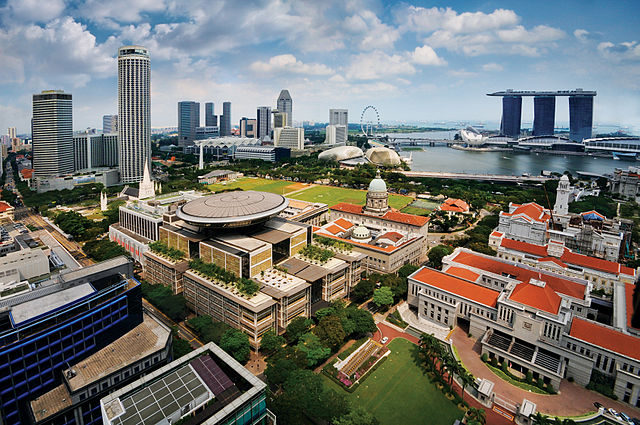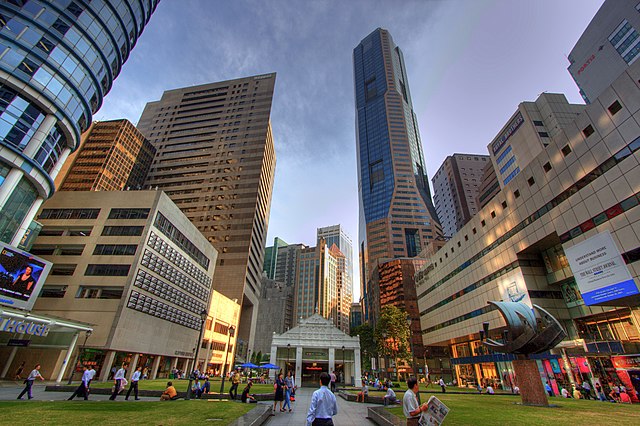The Downtown Core is the historical and downtown centre of the city-state of Singapore and the main commercial area in Singapore excluding reclaimed lands with many integrated resorts such as the Marina Bay Sands, one of the most expensive buildings in the world, with a luxurious standalone casino at Bayfront Avenue. There are many skyscrapers in Raffles Place, Tanjong Pagar and Marina Bay CBD with a height limit of 280m. It is one of the eleven planning areas located within the most urbanised Central Area, forming the latter's dense urban core. It is bounded by Rochor to the north, Kallang to the northeast, Marina East and Marina South to the east, Straits View to the southeast, Bukit Merah to the south, as well as Outram, Museum and Singapore River to the west.
Image: Aerial view of the Civic District, Singapore 20110224
Image: Raffles Place
Image: Parliament House, Singapore 20100803 02
Image: Singapore Merlion at Marina Bay 01
Marina Bay Sands is an integrated resort fronting Marina Bay in Singapore and a landmark of the city. At its opening in 2010, it was deemed the world's most expensive standalone casino property at S$8 billion (US$6.88 billion). The resort includes a 2,561-room hotel, a 120,000-square-metre (1,300,000 sq ft) convention-exhibition centre, the 74,000-square-metre (800,000 sq ft) The Shoppes at Marina Bay Sands mall, a museum, a large theatre, "celebrity chef" restaurants, two floating crystal pavilions, art-science exhibits, and the world's largest atrium casino with 500 tables and 1,600 slot machines. The complex includes three towers topped by the Sands Skypark, a skyway connecting 340-metre-long (1,120 ft) with a capacity of 3,902 people and a 150 m (490 ft) infinity swimming pool, set on top of the world's largest public cantilevered platform, which overhangs the north tower by 66.5 m (218 ft). The 20-hectare resort was designed by Moshe Safdie architects.
Marina Bay Sands
View of the three main towers, inspired by decks of cards
The infinity edge swimming pool in the Skypark
Construction on 5 August 2009








